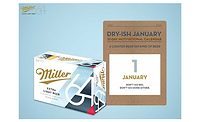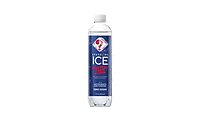Digital marketing trends keep beverage consumers connected
Beverage brands increase usage of AR in campaigns

Today’s digital atmosphere includes countless social media platforms, mobile apps and streaming services with which to download and interact. Although much competition in the mobile marketplace exists, there is good news for digital marketers — the amount of time consumers spend behind the screen likely will continue to rise, experts say. Even consumer packaged goods (CPGs) brands are tailoring their marketing techniques to keep consumers connected throughout their day-to-day lives.
According to a Fact Tank poll conducted by the Pew Research Center, Washington, D.C., the share of U.S. adults using social media mostly is unchanged since 2018 despite a long stretch of controversies over privacy, fake news and censorship, it says.
Conducted between Jan. 8 and Feb. 7, the poll found that Facebook remains one of the most widely used social media sites among adults in the United States, with roughly seven-in-10 (69 percent) adults saying they use the platform. YouTube is the only other online platform measured that matches Facebook’s reach at 73 percent.
Similar to 2018’s results, Instagram and Snapchat remain especially popular among consumers aged 18 to 29, being used by 67 percent and 62 percent of respondents, respectively. Another key takeaway from the research center’s poll is that the majority of Facebook, Snapchat and Instagram users report visiting these sites daily and some even report visiting the sites multiple times a day.
According to Chicago-based Mintel’s April “Digital Trends (Consumer) – US” report, media engagement is a large part of consumers’ daily routine. “Around six-in-10 adults who visit digital media touchpoints do so on a daily basis,” the report states. “More than half of consumers say that staying informed is one of the Top 3 purposes they use technology. The desire to educate and entertain themselves drives consumers to read articles, watch videos, listen to music and play video games regularly.”
So, with all the reported screen time and daily social routines, the question for marketers likely is something along the lines of “How do we get consumers to take notice of our brand when they constantly are being exposed to other brands?” The answer that most industry experts are giving is personalized and advanced content.
Personalization is key
Consumer interest in digital marketing is going to a more personal space, with advancements in direct-to-consumer marketing, says John Gross, director of business development at Portland, Ore.-based Sparkloft Media. “The brands doing it correctly are speaking to consumers on a completely individual level,” he says. “They know who each consumer is and what’s important to them. Brands are treating each consumer more like an individual, not a broad, generic group of wallets.”
Ashlynn Persing, social media strategist at Sparkloft, also highlights the importance of personalization. “Brands [are] striving to make digital interactions with consumers memorable through personalization — a common thread that customers say is important,” she says. “Even if a customer hasn’t interacted with a company, they still want to feel known. Examples of personalized touchpoints are email newsletters, or unique discounts solely based on past purchasing history.”
Experiential marketing also is tweaking its style with a quest to become more personalized. Until recently, experiential marketing mainly was reserved for “in-real-life” brand activations; however, as personalization becomes a looming factor, the two are beginning to merge, Persing notes. Marketers now are seeing a shift with brands aiming to make digital interactions with consumers more experiential, she says. This partially has been brought on with the evolution of augmented reality and the increased use of mobile devices, she adds.
Mintel’s April report details how consumers constantly are looking to brands to represent their beliefs and values. “Messages that can represent their core customers’ values can provide a service beyond their product by making their audience feel a part of something bigger,” the report states.
Likewise, Sparkloft’s Persing agrees, noting that brands like Mike’s Hard Lemonade’s White Claw portfolio and Davide Campari’s Aperol Spritz can attribute their rise in popularity, in part, to consumer engagement on social media.
“There is a growing demand for brands to cater to the increasingly complex desires of consumers by creating personal experiences for their audiences. Millennials are one of the major drivers of this trend as they value health, wellness and convenience,” she says. “They want unique experiences that go beyond the product itself, so beverage brands [have been] required to ramp up [their] innovation.”
Although it previously was tough for alcohol beverage brands to engage in digital marketing, because social media usage now is the norm, there most likely has been an increase of alcohol beverage brands utilizing the platforms to connect with their audiences, she says.
Another way to create tailored and personalized content is through artificial intelligence (AI), which can create personalized campaigns and ads for customers, says Nicolas Finet, in a June blog post titled “The Impact That Artificial Intelligence Will Have On Digital Marketing,” for Boston-based media company Shift Communications LLC.
“When you use AI tools with personalization, you can segment your audience into even smaller target groups,” he wrote. “[For example], instead of targeting an audience of 1,000 people, you’ll easily be able to create even smaller niche audiences of 10 people or even a single person. Ultra-personalization [can] be used on multiple channels from Facebook to email and everything in between, and no doubt it will result in greater conversion rates.”
Gabe Garner, senior vice president of business planning at New York-based Firstborn, also highlights how AI has helped marketers better serve its customers. “AI has moved automation forward by challenging marketers to come up with ways to provide value, especially in media,” he says. “ … It frees up creative resources to focus on larger, brand-level ideas and lets machines take the lower-level direct response stuff. AI also enables chatbots to provide better experiences to customers, which has had a big impact on marketing.”
A new type of reality
The digital landscape always has and will continue to be subject to change and innovation. “Media consumption habits are changing constantly and marketers are always trying to find a place for themselves somewhere within in it all,” Firstborn’s Garner says.
“We continue to see an uptick in content marketing, especially on Instagram,” Garner explains. “Brands are continuing to utilize chatbots as a way to connect with consumers through better experiences. And investments in emerging tech like AR [augmented reality] are creating new and interesting ways to engage consumers. These trends aren’t necessarily new, but these areas are continuously being refined.”
The beverage industry as a whole is flooded with new and interesting products and people are buying them, he says. As a result more is being done on the product side to meet shifting consumer needs than on the marketing side, he adds.
One way brands are shifting their strategy to consumer needs is through the use of different technologies. “Probably one of the biggest new trends is the use of technology at retail or on-premise locations, especially through augmented reality,” Garner says. “Being able to print a Snapchat code at an in-store promotion or beer coasters that can unlock a rich-interactive AR experience. This has put more tools in the marketing toolbox and we’re seeing a lot of these campaigns deliver compelling results.”
One example of a brand utilizing AR technology is Flow Alkaline Spring Water, Toronto. At this year’s Natural Products Expo West tradeshow, the wellness water brand unveiled a new on-premise campaign titled the Superpower of Alkalinity. Powered by memomi, the interactive augmented reality experience comes with customized memory mirrors that track a customer’s face to add super power illustrations that coincide with one of Flow’s flavors to create an immersive experience that then can be shared on social media, the company says.
At in-store demonstrations, the Flow team often would take photos and record the customer’s thoughts on the products, which was a large source of data and inspiration for the company, it said in a March press release. Flow wanted to deepen that experience for its customers by adding an opportunity for it to connect and engage with its consumers, it added.
As AR becomes increasingly popular, brands are beginning to incorporate the technology into other aspects of their campaigns. We are starting to see AR integrated into 360-degree campaigns; creating a tangible and measurable link between offline and digital worlds; and closing the gap between marketing and commerce, Firstborn’s Garner says.
“For marketers in the beverage category, AR offers a new platform to tell stories, capture attention in a cluttered market and create value for customers,” he explains. “[It also] offers alcohol-beverage marketers an exciting way to create engaging experiences triggered by the prime estate that is the bottle. Unlike other consumables, consumers enjoy having their spirits on display and the packaging — the bottle —will remain the home for a long time. This gives spirits brands an opportunity to play with the bottle in a way that really not many brands can do effectively with their respective packaging.”
For example, Garner highlights the wine brand 19 Crimes, a brand of Napa, Calif.-based Treasury Wine Estates. 19 Crimes uses AR to tell the stories of the convicts that were transported from the United Kingdom to Australia in the 1800 and 1900s. By downloading the Living Wine Labels app, consumers can listen to stories from the convicts and rebels behind the 19 Crimes. Consumers also can interact with “the warden” and defend themselves in a trial to prove their innocence, all powered through AR.
Changing with the times
As technology continues to become an integral aspect of the digital landscape, beverage brands will need to adapt and adjust their strategies accordingly. “Beverage companies must lean into the consumer of the future — one that has completely shifted over the years,” Sparkloft’s Persing says. “Consumers now are empowered, socially conscious individuals who want to connect with a brand rather than just passively purchase.
“Keeping this in mind, beverage brands should strive to tell a story and build their social influence to demonstrate their own relevance,” she continues. “[B]everage brands should showcase lifestyle, fun and an emotional connection to their audience through digital marketing [techniques].”
Implementing various digital marketing tactics is set to have a large impact on the beverage industry, experts note. “The digital marketing space has had a tremendous impact on the industry by opening up opportunities for new brands,” Sparkloft’s Gross explains. “It’s easier to enter with a disruptive product, whether you’re a startup or well-established brand. Incubators have been an increasingly important aspect to new [direct-to-consumer] strategies, where brands no longer have to secure their distribution strategies before entering the market.”
According to Firstborn’s Garner, digital marketing has allowed beverage companies to ramp up their game in ways previously not done before.
“Digital has also opened the floodgates for much more focused occasion-targeted marketing,” he says. “Many beverages rely on defining these occasions (remember ‘It’s Miller Time?’) Whether that’s getting a beer or spirits with a colleague after work, hydrating after a workout, or a caffeine boost at the start of the day, occasions have always been a critical moment in the beverage consumer’s journey.”
Technology has made marketers better able to reach consumers with compelling digital experiences, Garner says. BI
Looking for a reprint of this article?
From high-res PDFs to custom plaques, order your copy today!






